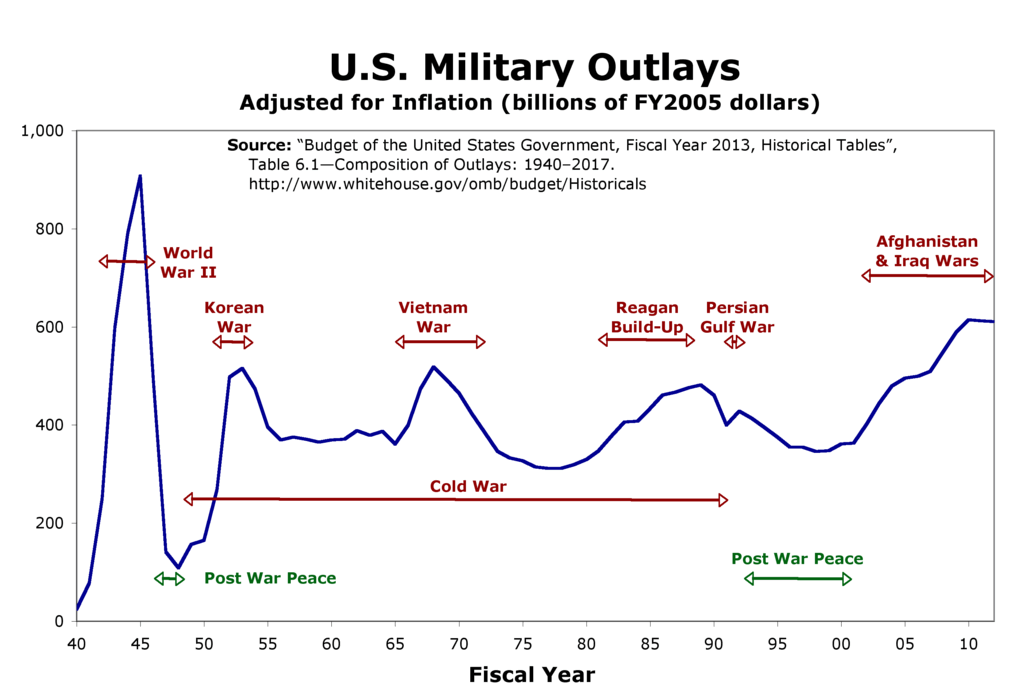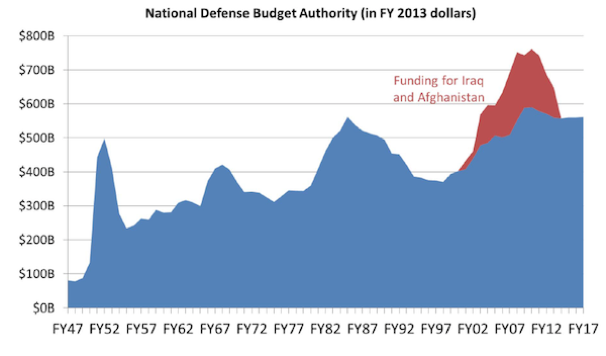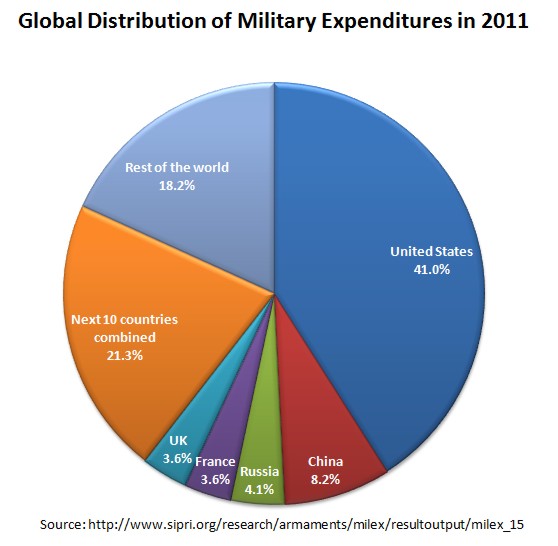|
A FEW FACTS REGARDING AMERICAN MILITARISM 
No let-up in US spending growth under Obama Obama’s election created hopes among many for a more consensual and multilateral approach to foreign policy than that of his predecessor. In the area of military spending, however, the Obama Administration has shown little sign of a change of direction, with the Nobel Peace Prize winner presiding over record levels of spending since World War II. US military expenditure rose by 63% in real terms between 2000, just before George W. Bush took office as president, to 2008, his last full year in office. Although much of this was due to the conficts in Afghanistan and Iraq, the continuing efforts to maintain and extend US global military dominance through the development of advanced weapon systems also played a major role. Outlays for ‘National Defense’ increased a further 7.7%
in real terms in
For F[iscal] Y[ear] 2010 Obama’s first defence budget proposal requested a more or less unchanged level of budgetary authority, but this was still projected to lead to another significant increase in actual spending, as spending continues on existing programmes. This was true even before the December 2009 announcement of a further troop ‘surge’ in Afghanistan. The Obama 2010 budget did bring some changes: one reform was to end the practice of mid-year ‘emergency’ war supplemental appropriations, much-criticized for reducing opportunity for congressional scrutiny. Instead, a single Overseas Contingency Operations budget was put to the Congress alongside the main defence budget—but as it turned out, the Afghanistan surge has led to Obama asking the Congress for a supplemental after all. Meanwhile, some major weapon programmes were cancelled in the main budget, such as the F-22 stealth fighter, with increased spending on some current priorities such as increased troop strength, unmanned aerial vehicles (UAVs), cyberwarfare, and other current priorities. There were also increases in some traditional major weapon programmes such as the F-35 Joint Strike Fighter. As a result of the budget and the congressional changes, US military spending is now projected to reach $719 billion in 2010. Overall, the budget involved some ‘rebalancing’ of priorities, but no major strategic shift. The FY2011 budget was announced in February 2010, and
shows yet another increase both in the budget and in projected
outlays, expected to rise to $739 billion in 2011. Despite the administration’s
urgency to begin reducing the budget deficit, security-related expenditure
was excluded by Obama from a planned three-year squeeze in discretionary
expenditure.
How is it that US military spending, already far
exceeding that of any other country and at record real-terms levels since
World War II, is continuing to increase in the face of a dire
economic crisis
One factor remains the conflict in Afghanistan, to which
Obama is committed and where the US troop presence is increasing, even
as the conflict in Iraq winds down. Another is that reducing the military
budget can be like turning round the proverbial supertanker—weapon programmes
have long lead times, and may be hard to cancel. Members of the Congress
may also be resistant to terminating programmes bringing jobs to their
states; some programmes, such as the C-17 transport aircraft, which Obama
wanted to end in the FY
However, the fact that military expenditure is continuing to increase even as other areas are cut suggests a clear strategic choice: the fundamental goal of ensuring continued US dominance across the spectrum of military capabilities, for both conventional and ‘asymmetric’ warfare, has not changed. (Source: Military expenditure.SIPRI Yearbook 2010.
Major U.S. defense contractors* federal contracts
lobbying
campaign
[*Year not given]
Including discretionary spending, the officially admitted US "defense"
expenditures or expenditures required to wage wars and prepare for more
wars, were reaching about 760 billion dollars two or three years ago, but
critics claimed there were further hidden funds that made such expenditures
top 1 trillion (= 1000 billion) US dollars. It would be worthwhile to compare
this with genuine US development aid (as opposed to so-called military
assistance) and to expenditures destined to reshape the energy sector and
thus combat climate change/global warming.
Sipri.org/World-military-expenditure-1988-to-2012.png
Compiled by Paolo Lajolo
Go back to Art
in Society # 14, Contents
*
|
.
SIPRI REPORT
. |

